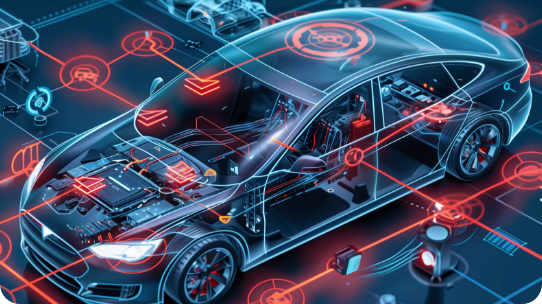Targeted Jobs {{jobCount}}
Featured
Jobs
Search by Industry
Career
Consulting
Specialized Job Search Support in the Automotive, Mobility, and Semiconductor Industries
Turnpoint Consulting is a recruitment agency dedicated to the automotive, mobility, and semiconductor sectors. Our experienced consultants possess deep industry knowledge and are committed to helping you unlock your full career potential.
-
Trusted by
10,000
+ Candidates
-
Higher Salary
88.2
%
-
Customer Satisfaction
94
%
Our Consultants
Consultant Introduction
Our consultants make it a priority to thoroughly understand each client company by conducting on-site visits and participating in corporate briefings. Through in-depth discussions and sharp, insightful questions, they gather information from multiple perspectives. Leveraging a broad professional network, they provide personalized job introductions tailored to each individual’s career goals and preferences.
-
Importer & Financial Services Team (IFS)/Semiconductor Team
Brice, Marcel.
Marcel Bliss
Team Manager/Senior Principal Consultant
Dedicated to the automotive and mobility industry, receiving foreign importers and MaaS-related companies. He is in charge of a wide range of jobs, mainly sales and marketing positions, but also business planning, dealer development, SCM, etc.
-
-
Importer & Financial Services Team (IFS)
Luo Meilien
Meilian Luo
Senior Consultant
He is responsible for foreign-capital complete vehicle manufacturers and introduces a wide range of positions from marketing to PR, sales, after-sales, and so on.
-
-
Importer & Financial Services Team (IFS)
Senko, Michael
Michael Senko
Associate Consultant
He will be responsible for digital marketing, sales, SCM, after-sales, and financial services of a foreign complete vehicle manufacturer.
-
Consultation
Our expert team is dedicated to empowering your career change, crafting tailored career plans, and securing the best job opportunities in the automotive and mobility sectors.
Candidate's voice
Turnpoint Media
-
Job Change x Trend News] Can’t Take My Eyes Off of You! Summary of the latest EV situation
Here you will find trending news topics in the automotive and mobility markets around the world. We carefully select interesting news in the automotive industry, both domestic and international, and translate and summarize the contents for your reference. We hope you will find it useful in catching up with the latest news in the industry. […]
-
Gigacast is the key to EV manufacturing! Summary of companies introducing Gigacast
Here you will find trending news topics in the automotive and mobility markets around the world. We carefully select interesting news in the automotive industry, both domestic and international, and translate and summarize the contents for your reference. We hope you will find it useful in catching up with the latest news in the industry. […]
-
Job Change x Trend News] By Manufacturer! Summary of the latest situation of self-driving cabs
Here you will find trending news topics in the automotive and mobility markets around the world. We carefully select interesting news in the automotive industry, both domestic and international, and translate and summarize the contents for your reference. We hope you will find it useful in catching up with the latest news in the industry. […]
-
Trend News] Increased Competition for the Latest Technology? Summary of Recent Developments in the Chinese Automotive Market
Here you will find trending news topics in the automotive and mobility markets around the world. We carefully select interesting news in the automotive industry, both domestic and international, and translate and summarize the contents for your reference. We hope you will find it useful in catching up with the latest news in the industry. […]
-
Changing Jobs in the U.S.|A Beginner’s Guide to Making Your First Overseas Career Change
What are the two routes to start a career in the U.S.? There are two ways to start a career in the U.S. 1) Targeting through local hiring: Apply to companies recruiting in the U.S. 2) Targeting expatriate positions: Focus your job search on domestic companies with operations in the U.S. and move to the […]
Frequently Asked Questions
-
What kind of career support does Turnpoint Consulting offer?
We will not only introduce you to jobs that match your needs, but also provide you with as much detailed information as possible, including job market trends and information on companies looking for candidates, correcting your application documents, preparing for the selection process, and providing support after you receive a job offer. We also provide detailed information on the job market and companies looking for candidates, correcting application documents, preparing for the selection process, and providing support after receiving an offer.
-
What types of positions does Turnpoint Consulting handle?
As we are a recruitment agency specializing in the automotive and mobility industry, the jobs we handle are mainly in this area. We handle a wide range of job types from management, sales and marketing, engineering, SCM, and administration.
-
Is the service completely free?
It's all free of charge. Our service is free of charge from registration to interview and job change.
-
I’m not planning to change jobs immediately – can I still reach out just to gather information?
Of course, please feel free to contact us.
After registering, we will arrange a date for an interview, after which your consultant will meet with you to discuss your needs. -
If I apply for a job listed on your site, does the application go directly to the company?
This is not a direct application to the listed companies. After registering, you will have an interview with one of our consultants, who will introduce you to jobs at the listed companies if available. We can also introduce you to other jobs that match your requirements.
-
I’m interested in registering for job search support in the U.S. / How can I register for both Japan and U.S. career support services?
If you would like to register only for our U.S. recruitment support, please click on the following link:
https://turnpoint-consulting.com/usa-home/#register
If you would like to register for our U.S. recruitment support service in addition to our Japan recruitment support service, please fill out the registration form for the Japan service If you would like to register for both services in Japan and the U.S., you can register for both services by completing the registration form for Japan and the U.S. at Please register at the following links:
https://turnpoint-consulting.com/registration/
Search by Job Type
Search by Location
Consultation
Our expert team is dedicated to empowering your career change, crafting tailored career plans, and securing the best job opportunities in the automotive and mobility sectors.














